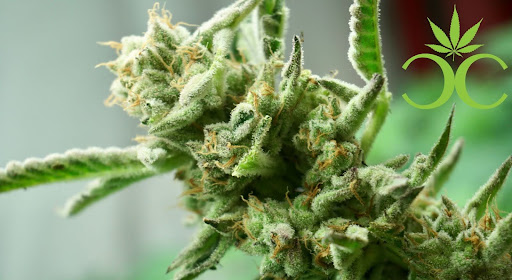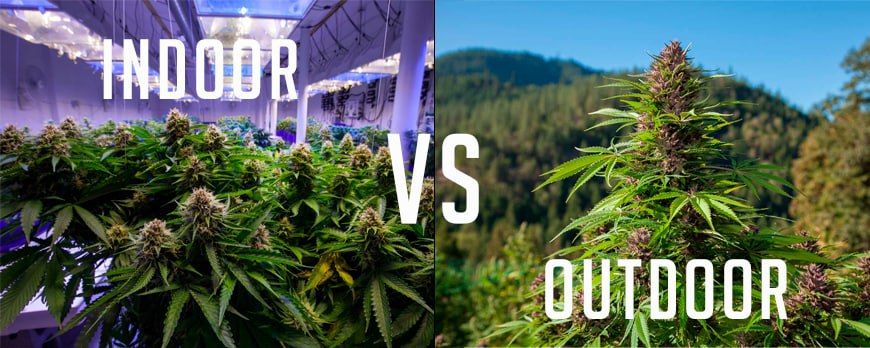Cannabis is a plant that has been cultivated for thousands of years. It was first grown in Central Asia about 11,700 years ago, and since then, it has spread throughout the world. (1) Over the course of history, the plant has been used for its fiber in making clothes, animal fodder, rope, paper, and of course, for psychoactive and medicinal uses. Outdoors, it is an extremely resilient plant that grows best in tropical, humid climates where it can access enough sunlight throughout the year.
It was not until relatively recently- in the 1980s- that American growers began to study how to grow cannabis indoors. The movement initially began as a means to hide cannabis from law enforcement, but it soon took off in popularity as growers saw the potential of this cultivation method. With indoor growing, cultivators could manipulate the exact conditions the plant requires without worry over weather or light conditions. Not only that, but more cannabis enthusiasts around the world could enjoy fresher buds with better-preserved cannabinoids and terpenes.
At Canna Culture in San Jose, we understand the intricate differences between outdoor and indoor-grown weed. Whether you are a cultivator yourself or simply just beginning to dabble in beginner-friendly cannabis, understanding the science behind it will help you get the experience you are looking for. At our dispensary, we ensure each product is lab-tested and of the highest quality. Although our client base is mostly in San Jose, we offer free and fast delivery within a 20-mile radius. To explore our range of premium pre-rolls, edibles, flower, and more, visit our online menu and order today. We can provide same-day delivery services, depending on what time you place your order.
To inquire about any of our products or services, give us a call at (408) 264-7877 or use our contact form and one of our budtenders will get back to you as quickly as possible.
Contents
What to Know About Outdoor-Grown Weed

Though weed has been growing wild outdoors for millions of years, growers must work hard to yield cannabis with great flavor and an abundance of cannabinoids. There are several negative environmental factors that they must take into consideration when growing cannabis that can endure the outdoors for its lifetime:
- Fluctuating weather conditions: Cannabis is mostly unsuited to survive outdoors in many areas of the northern hemisphere. Growers are often limited to choosing genetically altered cannabis that is capable of flowering faster, but this often comes at the cost of smaller harvest yields and smaller specimens on average. The reality is that cannabis reaches its full potential when it grows in conditions with 50 to 70% humidity and temperatures roughly between 70 and 90 degrees Fahrenheit. (2) In some areas of the United States with unpredictable weather conditions, growing cannabis outdoors is extremely difficult or impossible. Compromising on these factors can greatly affect the plant’s health and bud potency.
- Pests: When outdoors, cannabis is subjected to a variety of pests including, but not limited to, aphids, mites, gnats, caterpillars, inchworms, leaf miners, and more. As a plant native to Central Asia, it is not equipped to handle these non-native insects. Without any protection of indoor greenhouses, growers must resort to the use of pesticides. Growers have access to around 350 pesticides for cannabis, and some have been detected within cannabis smoke, suggesting that consumers ingest these chemicals. There is little research on just how they affect the human body. (3) Many uninformed growers simply spray their plants as a cheaper and hassle-free means of keeping the insects away. Unfortunately, the Environmental Protection Agency (EPA) has yet to approve any pesticides used for cannabis due to its federally illegal status, so there are still no studies available. Also, because of these same federal regulations, cannabis cannot be labeled “organic”.
- Disease: Plants are more vulnerable to diseases like fungi, viruses, viroids, and other microorganisms in uncontrolled outdoor conditions. The most common pathogens to infect cannabis plants are the Fusarium (fungi) and Pythium (parasite) species. (4) Cannabis can transfer its fungal infection to consumers if cultivated by an inexperienced grower. Most of the time, growers’ only option is to completely remove infected plants and hope that it has not spread to the entire crop.
- Changing seasons: Fall and winter months in certain areas may not have enough light for cannabis to thrive. Cannabis usually needs about 12 hours of sunlight each day to photosynthesize enough and produce the most cannabinoid-rich flower. With too much sun, cannabis can experience bleaching (a type of discoloration), tacoing (curled leaves), and stunted growth that also affects the quality and quantity of the cannabinoid-rich trichomes on each bud.
Advantages of Indoor-Grown Cannabis

Indoor cannabis growing has revolutionized the way cultivators maintain plant health and optimize the quality of their flower. At Canna Culture we cultivate our own indoor flower to the highest standards in the cannabis industry which include using the newest technology with AI while expanding the garden. Some benefits include:
- Greater environmental control: Growers can manipulate exactly how much light their cannabis receives with LED lights, equipped with all of the wavelengths they need to photosynthesize. With artificial means, they can induce flowering after a certain period of growth, ensuring that the plants are healthy and strong enough to produce the very best yields. Greenhouses also allow them to control humidity and temperature to promote protection from disease. Cultivators can also yield year-round harvests without a second thought to the weather or sunlight outside.
- Shelter: With greater protection against the elements and pests, growers can mitigate the risk of excess moisture and mold development, a problem that can go undetected in outdoor-grown weed. There is a much lower risk that you will accidentally buy tainted weed if it is grown indoors.
- Greater trichome density: On average, cannabis buds grown indoors are smaller and have more trichomes, the colorful structures that hold cannabinoids. This means more THC, CBD, and other compounds that make for a better experience.
- More strain diversity: With controlled indoor growing conditions, growers gain an opportunity to cultivate a wider variety of hybrid strains for more customized experiences for users. If you are looking for mixed psychoactive and therapeutic effects with varying cannabinoids coming together in an entourage effect, you are more likely to find it with indoor-grown cannabis.
- Foxy Fire – Sativa Hybrid – 27% THC
- Chatter Box – Sativa 28% THC
- Pink Runtz – Indica Hybrid 23% THC
- Cosmic Grape – Indica 24% THC
Canna Culture VIP Rewards Program
Consider joining the exclusive Canna Culture VIP program if you are one of our regular customers. With this program, you can expect a 2% return for any purchase from our menu. If you are an experienced cannabis enthusiast, you can accumulate a decent savings. With this membership, you can also bring a friend to our dispensary, and they can enjoy one of our pre-rolls for only $2 alongside any product of their choice. You can be the first to know about our buy-one-get-one sales, news on upcoming events, and other discounts.
To stay updated on the latest products in stock, keep in touch with us on X, Instagram, Facebook, and TikTok. Our budtenders have all the in-depth details you need to know to find the perfect pre-roll, concentrate, flower, edible, or accessory. To stay informed on our products and cannabis research in general, visit our blog.
Weed Delivery in San Jose
No matter if you choose outdoor or indoor-grown cannabis, the brands we feature on our menu are all third-party lab-tested and cleared for safety. With the wide variety of products available on our menu, you can find the best cannabis has to offer with our unique delivery options:
- We serve clients in Mountain View, Cupertino, Sunnyvale, and other neighborhoods of Santa Clara County.
- We promise free delivery within a 20-mile distance from our dispensary in San Jose.
- We are available from 9 am to 9 pm each day, seven days a week.
- To get the benefit of free delivery, you will need to make a $100 purchase.
- We strive to provide same-day delivery with orders requested earlier in the day.
- For those who are close to our location, feel free to opt out of delivery and choose our curbside pickup option.
As part of our mission to make cannabis more accessible to new customers, we have a website FAQ page that you can visit before you place your order. If you have any further questions, our team can help you out; please call our San Jose location at (408) 264-7877, and we will be happy to provide you with more guidance on your cannabis journey.
FAQ
Is indoor-grown weed better than outdoor-grown weed?
Indoor-grown cannabis is slightly different from outdoor-grown cannabis, and it tends to have more cannabinoids that contribute to its psychoactive and therapeutic effects. Indoor-grown cannabis tends to be stronger and healthier due to the controlled and protected environment, so it yields better flower.
How does indoor-grown weed look different than outdoor-grown weed?
Indoor-grown weed buds tend to be more compact and smaller with more trichomes. Plants are smaller and typically have brighter colors and thinner stems.
Is weed easier to grow indoors?
With the right knowledge pertaining to optimal conditions for cannabis, growers can get higher yields with indoor-grown cannabis. It is not necessarily easier to grow, but cultivators have more control over the environment. They need to spend more time understanding soil pH, how to use lighting fixtures, and how to space out each plant. It can be more expensive to grow this way.
References
- Crocq MA. History of Cannabis and the Endocannabinoid System. Cannabinoids. 2020;22(3):223-228. doi:https://doi.org/10.31887/dcns.2020.22.3/mcrocq
- Davidson M, Reed S, Oosthuizen J, et al. Occupational health and safety in cannabis production: an Australian perspective. International Journal of Occupational and Environmental Health. 2018;24(3-4):75-85. doi:https://doi.org/10.1080/10773525.2018.1517234
- Taylor A, Birkett JW. Pesticides in cannabis: A review of analytical and toxicological considerations. Drug Testing and Analysis. 2020;12(2):180-190. doi:https://doi.org/10.1002/dta.2747
- Punja ZK. Emerging diseases of Cannabis sativa and sustainable management. Pest Management Science. 2021;77(9). doi:https://doi.org/10.1002/ps.6307


